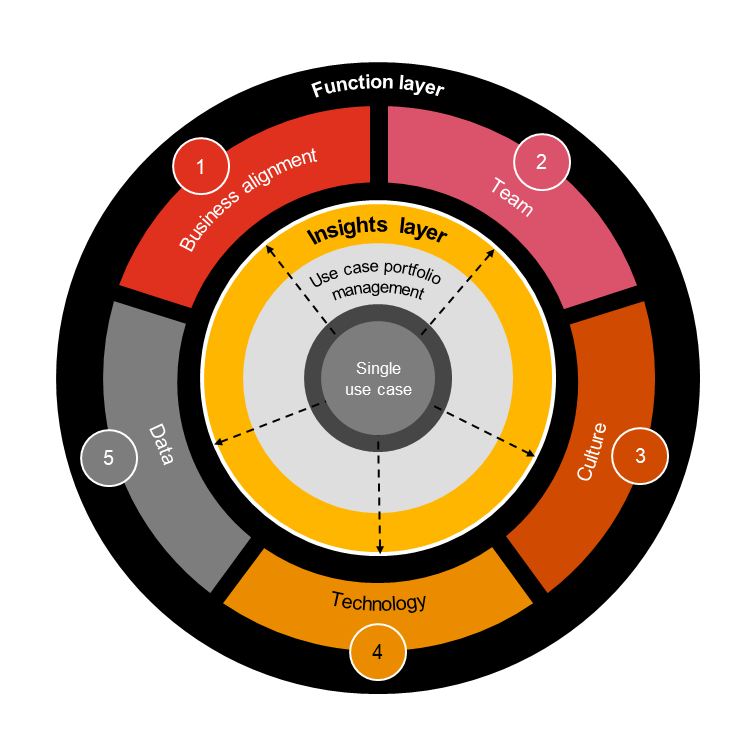
Download our publication
'There is no doubt about the added value of people analytics,' says Van de Pas. 'From positioning the organisation to attract and retain talent, to generating insights about what the future workforce should look like. But many organisations don't get the most out of it.'
'In addition, many managers see HR insights and data analysis as the biggest challenges facing the HR department today', adds PwC colleague Marlene de Koning. 'How can organisations ensure that people analytics deliver results? We answer this question in our report. Based on practical cases, it provides a framework to increase the value of people analytics applications.'
'People analytics increases the strategic impact and status of the HR department within an organisation.'
Our study shows that a systematic approach, aimed at matching your ambitions, knowledge and experience to the (future) requirements of your company, is of great importance.
The two layers of our framework reflect that people analytics is ultimately driven by the following factors:
‘People analytics is not just a tool for HR departments, but an essential asset for any company looking to unlock the full potential of its human capital.’
It is often difficult to decide where to start if you want to become a more data-driven HR department. Like most companies, you have probably already developed and implemented a number of use cases. It is good to take a step back and ask yourself: should you first focus on a more strategic approach of the function layer and solve challenges in areas such as data and alignment? Or should you focus on increasing the number of use cases in the insights layer?
When it comes to creating value with people analytics, we see that for most organisations it works best to do both: continue to increase the value of (existing or new) use cases while working on the strategic blueprint of your intended people analytics function.
Realising your ambitions in the field of people analytics does not happen overnight. It's important that you have a clear picture of where you are now, where you want to go, a roadmap to get there, and the gaps you need to fill along the way. You need to make progress on all elements of the framework as your strategy is rolled out and gradually adopted across the enterprise.
The best way to make the value of people analytics visible within your organisation is to get started on your biggest workforce challenge. That sounds simple, but it's better to show than to tell.
Whether you're creating more insight into the root causes of the problem, removing bottlenecks in critical HR system processes through automation, or building a predictive model and evaluating different intervention scenarios, you'll be demonstrating the impact of people analytics from day one.



